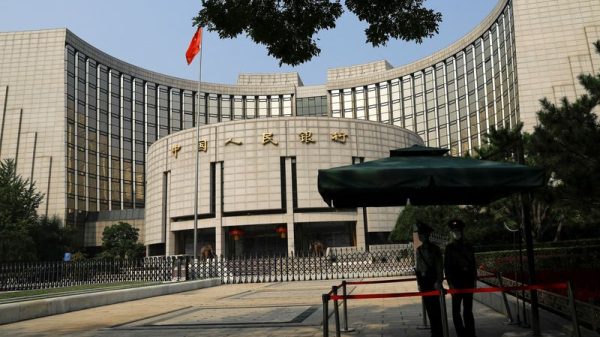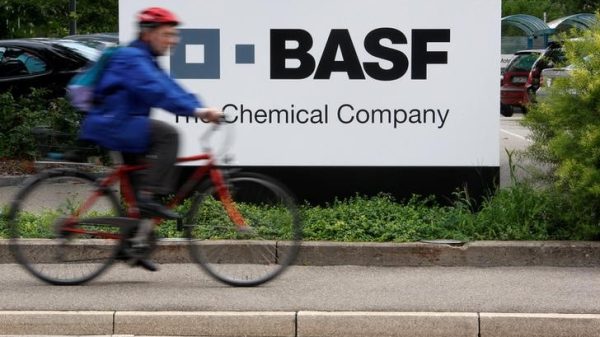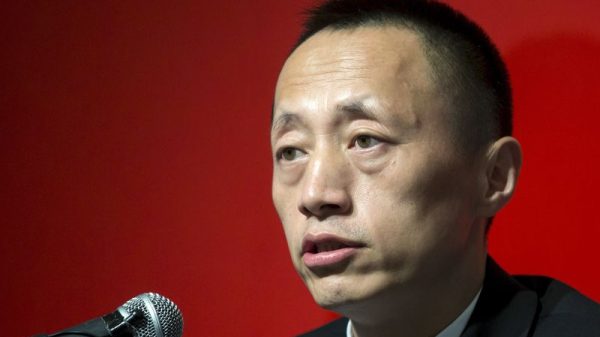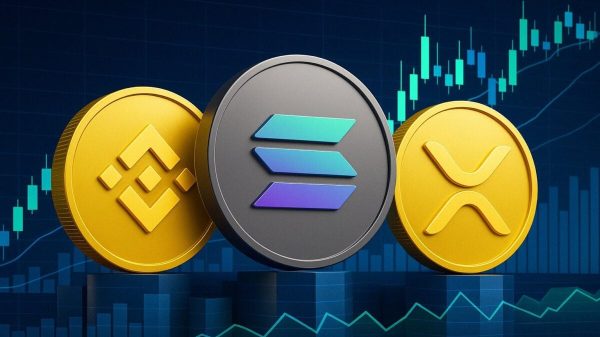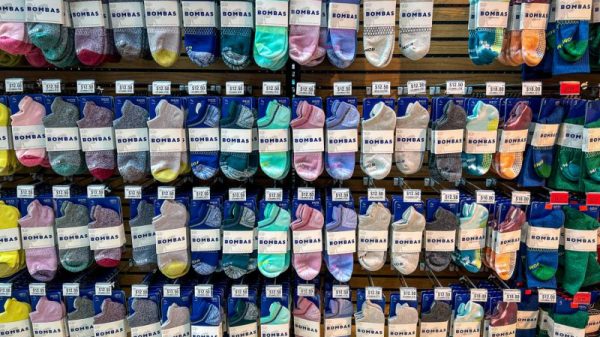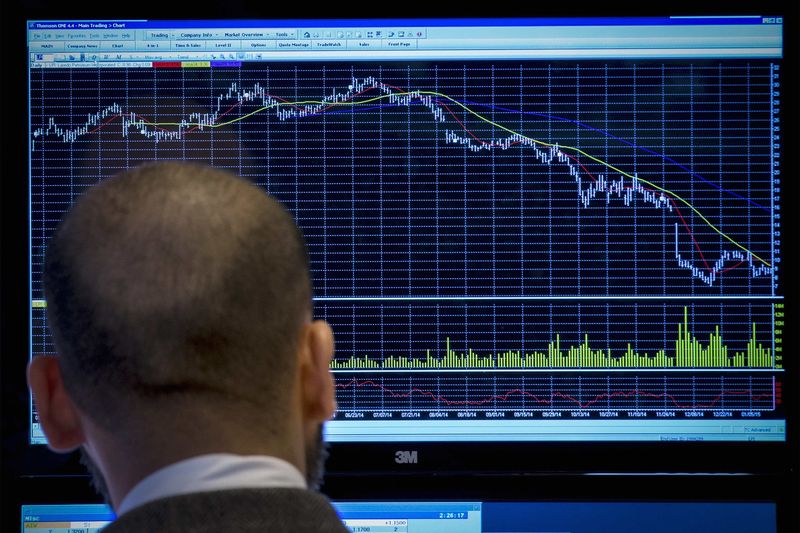Rayonier Advanced Materials Inc. (NYSE: NYSE:RYAM) reported a substantial year-over-year increase in earnings for the third quarter of 2024, with adjusted EBITDA rising to $51 million, marking a 113% improvement. Despite an isolated fire incident at its Jesup, Georgia facility, the company has maintained its EBITDA guidance for the year while increasing its free cash flow projections.
Key Takeaways
Adjusted EBITDA for Q3 surged by 113% to $51 million, with margins nearly doubling to 12.7%.
Year-to-date adjusted free cash flow reached $99 million.
The High Purity Cellulose segment saw a 119% rise in EBITDA due to higher prices and reduced costs.
A fire at the Jesup facility is expected to impact 2024 EBITDA by $10 million, but full operations resumed quickly.
RYAM successfully refinanced $700 million in debt, enhancing financial flexibility.
The company aims to optimize its balance sheet, reduce commodity exposure, and advance biomaterials initiatives, including a bioethanol plant set to begin operations in late 2026.
Company Outlook
RYAM maintains a strong liquidity position with a last twelve months adjusted EBITDA of $208 million.
The company seeks to optimize the balance sheet, highlighting the earnings potential of their core cellular specialty business.
A price increase of up to 10% for cellular specialty products was announced in September.
The 2024 adjusted EBITDA range is anticipated to be $205 million to $215 million, with free cash flow guidance increased to $115 million to $125 million.
Bearish Highlights
The Jesup facility fire will impact 2024 EBITDA by $10 million.
The indefinite suspension of operations at the Temiscaming HPC plant has reduced revenue share from non-fluff commodities.
Revenue decreased to low-single digits, influenced by High-Yield Pulp pricing and market conditions in China and Europe.
Bullish Highlights
The High Purity Cellulose segment’s strong performance and strategic price increases.
The successful debt refinancing, which provides enhanced financial flexibility.
The company’s focus on biomaterials aligns with increasing market demand for sustainable products.
Misses
Paperboard segment EBITDA declined by $6 million.
Reduced revenue share from non-fluff commodities due to the Temiscaming plant’s suspension.
Some softness in chemical segments, despite a competitor’s capacity shutdown benefiting RYAM.
Q&A Highlights
Market sensitivities discussed included exposure to China and demand trends in Europe.
Management addressed strategies to differentiate Maple 80 product from competitors.
Demand for ethers is modestly increasing, with a positive outlook for 2025.
The company plans to evaluate price increases for its Chemical Solutions portfolio during London Pulp Week.
Rayonier (NYSE:RYN) Advanced Materials Inc. (NYSE: RYAM) continues to navigate through market challenges while strategically positioning itself for long-term growth through its focus on biomaterials and sustainability. The company’s strong performance in the High Purity Cellulose segment and proactive financial management underscore its resilience in the face of adversity such as the recent fire incident. With a clear strategy to enhance profitability and reduce debt, RYAM is set to maintain transparent communication with stakeholders as it moves forward with its key initiatives.
InvestingPro Insights
Rayonier Advanced Materials Inc. (NYSE: RYAM) has demonstrated remarkable resilience and growth potential, as evidenced by its recent financial performance and strategic initiatives. This positive trajectory is further supported by real-time data and insights from InvestingPro.
According to InvestingPro data, RYAM has shown a strong return over the last year, with a 173.74% price total return. This impressive performance aligns with the company’s reported 113% increase in adjusted EBITDA for Q3 2024. The stock is currently trading near its 52-week high, with a price that is 98.08% of its 52-week peak, reflecting investor confidence in the company’s turnaround efforts.
Despite the challenges faced, including the fire incident at the Jesup facility, RYAM’s market capitalization stands at $657.61 million. The company’s price-to-book ratio of 0.73 suggests that it may be undervalued relative to its assets, which could be attractive to value investors considering the company’s improving financial position and strategic focus on high-margin products.
InvestingPro Tips highlight that RYAM’s valuation implies a strong free cash flow yield, which is consistent with the company’s increased free cash flow guidance for 2024. This aligns with management’s emphasis on optimizing the balance sheet and enhancing financial flexibility.
It’s worth noting that InvestingPro offers 11 additional tips for RYAM, providing a more comprehensive analysis for investors seeking deeper insights into the company’s financial health and market position.
While the company faces challenges, including weak gross profit margins as pointed out by InvestingPro Tips, RYAM’s strategic initiatives in biomaterials and its focus on high-value products like cellular specialties could potentially address this issue in the long term.
Investors should consider these insights alongside the company’s reported results and outlook to form a well-rounded view of RYAM’s investment potential.
Full transcript – Rayonier Advanced Materials (RYAM) Q3 2024:
Operator: Good morning, and welcome to the RYAM Third Quarter 2024 Earnings Conference Call. During today’s presentation, all parties will be in a listen-only mode. Following the presentation, the conference will be opened to questions with instructions to follow at that time. As a reminder, this conference is being recorded. I would now like to turn the call over to your host, Mr. Mickey Walsh, Treasurer and Vice President of Investor Relations. Thank you. Mr. Walsh, you may begin.
Mickey Walsh: Thank you. Good morning. Welcome again to RYAM’s third quarter 2024 earnings conference call and webcast. Joining me on today’s call are De Lyle Bloomquist, our President and Chief Executive Officer and Marcus Moeltner, our Chief Financial Officer and Senior Vice President of Finance. Our earnings release and presentation materials were issued last evening and are available on our website at ryam.com. I’d like to remind you that in today’s presentation, we will include forward-looking statements made pursuant to the safe harbor provisions of federal securities laws. Our earnings release as well as our filings with the SEC list some of the factors, which may cause actual results to differ materially from the forward-looking statements we may make. They are also referenced on Slide 2 of our presentation materials. Today’s presentation will also reference certain non-GAAP financial measures as noted on Slide 3 of our presentation. We believe non-GAAP financial measures provide useful information for management and investors, but non-GAAP measures should not be considered an alternative to GAAP measures. A reconciliation of these measures to their most directly comparable GAAP financial measures are included on Slides 20 through 25 of our presentation. I’d now like to turn the call over to De Lyle.
De Lyle Bloomquist: Well, thank you, Mickey, and good morning. I’ll start with a financial overview for the third quarter of 2024. Afterward, I’ll outline recent company actions before passing it on to Marcus, who will dive into business segments, capital structure and liquidity. After Marcus’ remarks, I’ll return to discuss our ongoing initiatives and updated guidance for 2024. In Q3, we delivered robust performance with adjusted EBITDA reaching $51 million, marking a $27 million or 113% increase from last year. Margins nearly doubled year-over-year, reaching 12.7% in Q3 2024. Year-to-date, adjusted free cash flow stands at $99 million, highlighting our ability to generate substantial cash flow while executing strategic initiatives. In the High Purity Cellulose segment, EBITDA rose by $32 million or 119%, driven by higher cellulose specialty prices and volumes and decreased costs for key inputs. Our non-fluff commodity exposure dropped to 4% of revenue in the quarter, down to — from 14% last year. The Paperboard segment saw a $6 million EBITDA decline, driven by reduced sales prices and increased pulp costs. Meanwhile, our High-Yield Pulp segment showed a $6 million EBITDA improvement due to higher prices and productivity, though partially offset by sales volume decreases. Corporate expenses increased by $5 million, driven by unfavorable foreign exchange rates compared to the prior year period and higher variable compensation and environmental expense. Our overall success this quarter reflects strong performance in our core cellulose specialty segment. We continue to shift our product mix towards specialty production and sales while focusing on cost reductions across the enterprise. On October 11th, we encountered an isolated fire at our Jesup, Georgia facility. Thanks to the swift and effective response from our team and local emergency services, the incident was effectively managed, appropriate repairs were made, and we resumed full operations by October 25th. The fire primarily compromised power lines and instrumentation in our A and B mill digester areas. Additional repairs will be conducted over the next couple of years and are expected to be capitalized. We anticipate minimal impact to long-term operations. Investigation into the cause of the fire is ongoing. Currently, we expect the fire to impact EBITDA by $10 million in 2024, with an additional $3 million [Technical Difficulty] capital. While work on the full claim amount is ongoing, we have put our carrier — our insurance carrier on notice of a claim under our business interruption and property casualty insurance, which includes a $15 million deductible to mitigate financial exposure to this incident. On October 29th, we achieved a key milestone by successfully refinancing our debt, providing flexibility to execute our long-term business strategy. This new structure allows us to deleverage strategically and invest in growth opportunities. Marcus will provide additional details on the new debt agreement. Prior to the fire, we were on track to raise our EBITDA guidance for the year. Thanks to our team’s swift response, we minimized the impact on earnings and are holding our EBITDA guidance at $205 million to $215 million. Additionally, with improved visibility into year-end cash flows, we are increasing our full year adjusted free cash flow guidance to $115 million to $125 million. I’ll now turn it over to Marcus to go over the quarter financials. Marcus?
Marcus Moeltner: Thank you, De Lyle. Beginning with our HPC segment on Slide 5, quarterly sales increased by $33 million or 11% to $325 million. Overall, HPC pricing increased 13%, largely due to a higher mix of CS products. Total (EPA:TTEF) sales volumes were flat, reflecting a 32% increase in CS sales, partially offset by a 24% decrease in commodity sales. The rise in CS sales volumes was supported by several factors. The closure of a competitor’s plant in late 2023, the easing of prior year customer destocking, a continued uptick in ether sales and bridge volumes from the indefinite suspension of the Temiscaming HPC plant. Other sales for the quarter were $26 million, including $14 million of green energy sales. EBITDA for the HPC segment rose by $32 million to $59 million, primarily due to an enriched mix of CS sales and the benefit of decreased key input costs. EBITDA margins for the quarter reached 18%. Turning to Slide 6. Sales in the Paperboard segment decreased by $2 million, driven by lower demand. EBITDA for the segment declined by $6 million to $11 million, primarily due to weaker sales mix and increased competitive activity from European imports as well as the impact of higher purchased pulp costs. EBITDA margins for the segment reduced to 20%. Turning to the High-Yield Pulp segment on Slide 7, sales increased by $3 million in comparison to the prior year, mainly due to a 14% increase in sales prices, partially offset by a 3% decline in sales volumes due to shipment timing. Segment EBITDA improved $6 million to $1 million as compared to the prior year quarter, where the segment was generating negative EBITDA due to lower pricing and higher costs. Transitioning to Slide 8, the consolidated operating loss for the quarter amounted to $17 million. This includes a $25 million non-cash impairment charge related to the indefinite suspension of the Temiscaming HPC line, as well as $7 million of suspension charges incurred in the third quarter. Excluding these one-time impacts, operating income for the quarter reached $15 million. The impairment and suspension charges more than offset the benefits of an improved product mix, favoring HPC CS grades, overall higher pricing for both HPC and High-Yield Pulp segments and a 32% increase in CS volumes. Other cost benefits, including reduced key input costs, were partially offset by unfavorable foreign exchange rates as well as higher environmental expenses and variable compensation. Now, let’s turn to Slide 9. Net debt ended the quarter at $653 million, a reduction of $90 million from the same period in 2023. Net secured debt, as reflected in our financial covenant ratio associated with the term loan, ended the quarter at $622 million. Net secured leverage reduced further and closed the quarter at 2.8 times. Liquidity grew to $281 million, reflecting $136 million of cash, $135 million available under our ABL facility, and $10 million from our French factoring facility. Year-to-date CapEx totaled $80 million, with $30 million allocated towards strategic capital to support the startup of the Tartas Bioethanol project and the implementation of our upgraded ERP system. Net of financing, strategic capital reached $12 million. The company’s pro forma capitalization is set out on Slide 10. As previewed by De Lyle, I am pleased to announce that we have successfully completed the refi of our existing senior secured notes and term loan. The company raised $700 million in secured term loan financing managed by Oaktree Capital Management. This refinancing strengthens RYAM’s capital structure and enhances our financial flexibility to execute the company’s long-term business strategy. The new lending facility, combined with cash from our balance sheet, will be used to the defease and redeem our existing 2026 senior secured notes and fully repay our 2027 secured term loan, as well as cover related fees and expenses. In conjunction with this refi, we also secured commitments for a new five-year $175 million asset-based lending facility, with a sizing that better aligns with our current business portfolio. The facility is initially priced at SOFR plus 2%. As of the end of the quarter three, there were no outstanding borrowings on the existing ABL credit facility, and we had $35 million in letters of credit issued. The new term loan matures in five years and accrued interest at a rate of SOFR plus initial spread of 7%, which is subject to adjustment based on our consolidated net secured debt to covenant ratio. Importantly, the term loan provides us with the flexibility to repay the debt at acceptable premiums, starting in 18 months, allowing us to deleverage earlier if market conditions are favorable. The loan also provides a special payment provision for asset sales, enabling us to make prepayments from asset disposition proceeds. As our net leverage profile improves, the loan’s pricing grid allows for reductions in the interest rate spread, further benefiting the company’s financial position. This structure allows us to meet our obligations while positioning us to benefit from potential declines in interest rates. It also provides the flexibility to make strategic investments that will fuel the growth of our biomaterials strategy. For 2024, we had set an objective to reduce total debt by $70 million, excluding related fees and expenses for the refi. In Q3, we retired $12 million of outstanding senior notes through public market transactions and have repaid an additional $12 million of other term debt year-to-date. In addition, we chose to allocate $45 million of capital to support our refi activities. Going forward, RYAM remains committed to reducing debt levels further and are confident that the company’s strategic initiatives will continue to create long-term value for our shareholders. Overall, our liquidity remains strong and the company’s LTM adjusted EBITDA has reached $208 million. Our various strategic initiatives have supported this positive performance improvement across the business. With the successful completion of the refi and commitments for our ABL facility, the company’s capital structure has been strengthened, and we are well-positioned to continue executing our long-term business strategy. With that, I’d like to turn the call back to De Lyle.
De Lyle Bloomquist: Well, thank you, Marcus. Let’s now turn our attention to Slide 11, where I’ll provide an update on our key 2024 initiatives. Our top objective this year was to refinance our 2026 senior notes before they became current in January 2025. As Marcus detailed, we’ve successfully refinanced this debt, providing us with the flexibility to continue executing our strategic plan while preserving the option to take advantage of improved credit metrics over time. Another key initiative this year is to optimize our balance sheet by demonstrating the enhanced earnings power of our core cellular specialty business and exploring the potential sale of our non-core businesses. Our last 12 months’ adjusted EBITDA for our HPC segment was $220 million through Q3 2024, reflecting the inherent value of our specialty products in a market with supportive supply-and-demand dynamics. In September, we announced a price increase for our cellular specialty products of up to 10% effective immediately where contracts allow. We are currently in discussions about 2025 pricing with our specialty customers. We remain open to a sale of our Paperboard and High-Yield Pulp assets. While there are active parties interested, we have not yet received offers that meet our valuation expectations. Our priority is to ensure that any transaction aligns with the strong free cash flow profile inherent with these businesses. We also wanted to reduce commodity exposure and earnings volatility this year. To this end, we announced in April the indefinite suspension of the operations of our Temiscaming HPC plant. As a result of the suspension, the percentage of non-fluff commodities of total revenue was 4% in Q3 2024, down from 14% for the same period last year. We forecasted the EBITDA losses from non-fluff commodities to be reduced by nearly half from last year. The suspension is proceeding as planned, and there are no expected changes to the anticipated financial impact of the suspension. One of the most exciting initiatives this year involves our biomaterial strategy. We’re nearing completion of the detailed engineering phase for our Fernandina bioethanol plant. The project’s permitting timeline has been extended due to public participation, which is not uncommon and is being addressed through the administrative process. We now expect that this project will commence operations in late 2026 due to the extension of the permitting timeline. Our prebiotic animal feed product is self-GRAS certified and is waiting on registration from the FDA. The AGE project at our Jesup facility was recently awarded a Purchase Power Agreement in July to sell green biomass-derived electricity to Georgia Power Company. Still in the development phase, additional information regarding the progress of this project will be shared in 2025. Finally, we continue to evaluate crude tall oil projects in both France and the US. As a final note on our biomaterials strategy, we expect to make a significant announcement regarding green capital to help finance these projects in the current quarter. Let’s turn to Slide 12. Despite the $10 million EBITDA impact from the fire at our Jesup facility, we are reiterating our adjusted EBITDA guidance for the year to be in the range of $205 million to $215 million. The underlying strong performance of our core cellulose specialty business is largely offsetting the impact of this isolated incident. While softer results are expected in the fourth quarter due to the fire, we are confident that continued strength in our core cellulose specialty business, driven by improving demand and improved productivity will position us well moving forward. Cash interest expense for 2024 is projected to be approximately $93 million, impacted by the timing of the refinance. This includes a $15 million payment made in early January for last year’s fourth quarter due to the timing of the payment around the holidays. Pro forma for the new term loan, annual cash expense will be just over $80 million. Maintenance CapEx for the year is estimated at $78 million, including $3 million in capital related to the fire. We are also now expecting a $25 million benefit from working capital, which is lower than previously anticipated due to better-than-expected bridge volume production at Temiscaming as well as supply chain disruptions from the ILA port strike and Hurricane Helene in October. We have received a $15 million IRS tax refund and the $39 million from the sale of lumber duty rights. These gains will be partially offset by the impact of the Temiscaming HPC plant suspension. In summary, we are increasing our adjusted free cash flow guidance to $115 million to $125 million for the year. These funds will continue to be allocated toward debt reduction and strategic capital investments. On Slide 13, I dive deeper into the expected 2024 performance of each of our businesses. We project EBITDA for our High Purity Cellulose segment to range between $215 million and $225 million. We anticipate that 2024 cellulose specialty prices will increase by a low single-digit percentage compared to the prior year, as we continue to prioritize value over volume. Sales volumes for cellular specialties are expected to grow due to our competitor’s plant closure, bridge volumes from the indefinite suspension of the Temiscaming HPC plant and a modest uptick in ethers demand. These gains will be partially offset by changes in prior year contract terms, acetate destocking and potential reduction in sales related to the Jesup fire. Demand for RYAM’s commodity products remained steady. Sales prices for fluff products are expected to decline by a high-single-digit percentage compared to 2023, while sales volumes are projected to increase by nearly 30% year-over-year. For non-fluff commodities, average sales prices are expected to rise by a single — mid-single-digit percentage over 2023 levels, though sales volumes are expected to decrease by almost half, consistent with our strategy to reduce non-fluff commodity exposure. Pricing for all commodity HPC products is forecasted to soften slightly in Q4 with volumes seeing a modest increase sequentially. On the cost front, we anticipate lower overall cost in 2024, driven by reduced key input and logistics expenses, improved productivity and the ongoing Temiscaming HPC suspension. These cost savings will be partially offset by increased maintenance costs, Temiscaming custodial site expenses and Jesup fire recovery cost. Looking ahead to Q 2024, we expect EBITDA to be lower than in the prior year quarter, primarily due to Jesup fire repair costs and lower cellulose specialty production and sales volumes resulting in the fire. In biomaterials, we are making substantial progress toward our growth objectives. Our Tartas Bioethanol facility is producing to feedstock availability. We remain committed to strategic investments in green energy and renewable markets targeting several key projects. As stated earlier, we expect to announce financial plans for these initiatives in the coming quarter. Regarding Paperboard, we expect to achieve EBITDA of approximately $45 million in 2024. Paperboard prices are expected to decrease in Q4, while sales volumes are projected to increase as inventories are reduced. However, raw material prices are anticipated to rise compared to Q3 levels due to increased purchase pulp cost. As a result of these factors, we anticipate EBITDA decline in the coming quarters as market pressures persist with new competitive supply [Technical Difficulty] in 2025. Our High-Yield Pulp business is expected to achieve breakeven EBITDA in 2024. High-Yield Pulp prices are expected to decline sequentially due to ongoing price pressure from stranded pulp capacity in China. Despite the lower prices, sales volumes are expected to increase significantly, driven by shipment timing. However, the expected low sales prices are likely to persist, which would drive EBITDA loss for this business in the coming quarters. We expect our 2024 corporate cost to be approximately $55 million. In Q4, corporate costs are expected to decrease subject to currency rate fluctuation. Let’s turn to Slide 14, where we illustrate the trajectory of our EBITDA margin growth and net leverage decline. In 2024, we anticipate our margins to be in the 12% to 13% range, driven by the improved sales mix towards specialty products. The forecast for net secured leverage at the end of the year stands at 2.8 times covenant EBITDA. We remain confident that we will achieve our targeted net leverage ratio of 2.5 times well before 2027. With that, operator, please open the call to questions.
Operator: Thank you. We will now conduct a question-and-answer session. [Operator Instructions] The first question comes from Daniel Harriman with Sidoti. Please proceed.
Daniel Harriman: Hey guys, good morning, and congrats on another great quarter. Obviously, in recent weeks, we’ve seen your equity appear to be quite sensitive to what’s going on in China. And I was just hoping if you could maybe clarify your exposure to that slowing market and any benefit you see from government stimulus in the country? And then, maybe just a quick update on what you’re seeing in end-market demand for construction in Europe since that’s been coming up over the last six months or so? Thanks.
De Lyle Bloomquist: Good morning, Daniel. This is De Lyle. Taking your first part of the question, which is around our equity sensitivity to China, I would agree with your comments, it does seem to be that there’s some concern about what our exposure would be to China, but a couple of points I’d make to that. First, just a couple of facts. Roughly about 20% of our total enterprise sales is exposed to China. I mean, this is primarily around acetate, but also around some of our commodities like viscose and so forth. And also our High-Yield Pulp has some exposure there as well. Talking about each one of those pieces, with respect to acetate, acetate is very stable with respect to what goes on in China, whether — so there’s a disconnect between what’s going on with GDP in China and our asset demand. And that makes some sense. I mean, at the end of the day, most of our acetate going into China really goes into tow production and is tied to obviously cigarette consumption. So you’d expect that to be — that to be stable. With respect to viscose, as I mentioned already, our strategy is to reduce our exposure there. And so, we’ve seen a significant reduction versus last year. And as we see continued growth in CS production going forward, we’ll see that decrease going forward as well. But it’s already down to somewhere around very low-single digits in terms of our revenue. And then finally, with respect to — I just mentioned High-Yield Pulp, this is one area of concern, given the exposure we have with respect to, call the stranded pulp capacity that is in China and the impact it has on High-Yield Pulp pricing. And what we’re doing there is we’re trying to move and extract value for our Maple 80 product that we sell globally and trying to get — and we’ve been successful getting increased distance between our Maple product and our competitive Aspen products that are out there. One other area I would say in terms of exposure is kind of indirect through our ethers. When the Chinese domestic market is weak, we do see some ethers coming out of China into some of our more important markets, principally Europe. So there’s a little bit of pressure on that. And it’s — but we’re fighting back by getting to maintain market share in Europe as well as some of our other markets, but we do see a little bit of the impact of some of the exports out of China into the ethers market as well. But right now, we’ve been very successful in defending our share there.
Marcus Moeltner: And Daniel, it’s Marcus. As De Lyle highlighted, acetate is very stable, and that’s 40% of our exposure, that he highlighted. So, just so that it’s pretty sticky.
De Lyle Bloomquist: Daniel, can you remind me what your second part of your question was?
Daniel Harriman: It was just a quick one, if you could just update what you’re seeing in the ethers market in Europe and the construction end-market there?
De Lyle Bloomquist: All right. We’re seeing a little bit of uptick in demand for ethers. And I think that can be put into two different buckets. One is, I think a rebound in restocking. So, we’re seeing a build in the inventories there. I think the destocking activity we saw in ’23 was probably overdone. And as a consequence, our customers are restocking the shelf, so to speak. But we’re also, I think, seeing an increase in underlying demand, but it’s modest. We’re hopeful that as interest rates continue to decline, that demand — the underlying demand will increase. And one, just to point out activity that I saw this morning, the German economic — the German manufacturing index in terms of production was up, surprised on the upside this morning. And again, that would be very favorable for us if that continued. But again, right now, we’re seeing modest demand improvement and expect that will continue to improve as we go into ’25.
Daniel Harriman: Okay, great. Thanks so much guys.
Operator: The next question comes from Matthew McKellar with RBC Capital Markets. Please proceed.
Matthew McKellar: Hi, good morning. Thanks for taking my questions. I just wanted to follow on Daniel’s question there. You talked about ethers and around China, but maybe just a little bit more holistically, could you provide some color on what you’re seeing in the demand environment, I guess, particularly for acetates and other CS heading into 2025?
De Lyle Bloomquist: Hey, good morning, Matthew. I know it’s early for you. Thanks for joining the call. With respect to acetates and other CS — and other CS was generally filtration, [entire cord] (ph), MCC, and so forth. Acetate, let me answer that one first. Again, it’s generally along the same themes as I talked about earlier with respect to acetate in China, relatively stable. And we expect that will be relatively stable going forward. Not a real growth engine for us, more of a cash cow business for us, but it’s a business that we rely on to be stable, and we expect that to be the case going into ’25. Other CS, a little bit more economic sensitivity there. And we expect that in ’25 that demand will continue to improve. Little weak — I wouldn’t say weak, but there’s some softness here or there for other CS, but one of the things that’s offsetting that is obviously the shutdown of capacity at one of our competitors in Q4 ’23. And as a result, we were able to gain a lot of additional sales and production as a result of that shutdown. So, we — in ’24 versus ’23, obviously, we’re going to see an increase in demand and in production and sales as a result of that shutdown.
Matthew McKellar: Great. Thanks for the color. I guess next, I’d like to ask about the price increases you’ve messaged for CS. Can you talk about how implementation has gone across volumes that are exposed to the increases so far? And then, looking into ’25 and across the CS portfolio, are you able to speak to what you expect in terms of a weighted average net price increase for ’25 and how that may compare to how you’re thinking about inflation across your cost structure next year?
De Lyle Bloomquist: I’m going to disappoint you, Matthew. Way early in the process, but as stated already that value over volume is our strategy. So, we’ll continue to press our advantages there where we can. It will be a product grade sensitive. So there’ll be different prices relative — increases relative to the different grades, but we are working our angle there.
Marcus Moeltner: Matt, as you know, a lot of those discussions culminate in London Pulp Week, so that’s coming soon.
Matthew McKellar: Right. Okay. That’s fair enough. And then, if I could just sneak one last one in. It sounds like you’re expecting a little bit more spending to repair Jesup over the next couple of years. It sounds like that will be capitalized, but could you just give a sense of kind of magnitude there? What kind of we should be thinking of around spend levels in the next couple of years at Jesup, specifically?
De Lyle Bloomquist: Really can’t. We’re obviously going through quite a bit of investigation and engineering. And then obviously, once that’s done, then we’ll have to cost it out. So, it’s a little early to give you an estimate on that, and how much we would spend in ’25 versus ’26 is something we still need to figure out. But it doesn’t mean that we can operate the plant safely and effectively in ’25. These are issues that we feel that can be deferred and we want to just make sure we do it right. So, we’re taking our time doing the investigation and the due diligence on it.
Matthew McKellar: Okay. Thanks for the color. I’ll turn it back.
Operator: Thank you [Operator Instructions] Our next question comes from Dmitry Silversteyn with Water Tower Research. Please proceed.
Dmitry Silversteyn: Good morning, guys, and thank you for taking my question. A couple of questions, if I may. First of all, just to sort of circle back on the Temiscaming plant closure, you talked about bridge sales as you’re getting ready to shutdown the plant, helping you during the quarter. Is that going to continue in the fourth quarter, or is that pretty much run its course and we should be thinking about a little bit bigger step-down in revenue as we look into the fourth quarter?
De Lyle Bloomquist: It will help us a little bit since July shutdown, the benefit has diminished as time has gone on as we’ve sold the, call it, the bridge volume through the year. But so there’ll be a little uplift in Q4 as a result, but not as significant as it was in Q3.
Dmitry Silversteyn: Okay. Got it.
Marcus Moeltner: And the bigger impact there is obviously the working capital effect on activities up in Temiscaming for the quarter…
Dmitry Silversteyn: Okay. Understood.
De Lyle Bloomquist: As we liquidate the — yeah, right, as we liquidate the inventories, that’s right.
Dmitry Silversteyn: Okay. So, you’ll get a little bit of bump in your…
De Lyle Bloomquist: In cash flow.
Dmitry Silversteyn: Generation from drawing down your working capital. Got it. How should we think about the commodity volumes in your HPC business in the fourth quarter? You did about 90 million ton — or 90,000 tons in the third quarter. Is that the run rate we should expect for the fourth quarter and into 2025, or is there going to be a little bit more declines before we stabilize?
De Lyle Bloomquist: It’s likely to go up a little bit in Q4 versus Q3, and that is somewhat impact — it’s being driven by both seasonality and demand for CS. CS — the fourth quarter tends to be our lowest quarter or our slowest quarter with respect to demand for our CS products. And also, I would say that the Jesup fire may have also had some impact given that Jesup is primarily focused, almost 100%, not a whole 100%, but A and B mills are specifically dedicated to CS production. So, the impact of the fire was greater on CS than it was on the commodities.
Dmitry Silversteyn: Got it. Okay. Thank you for that color. And then finally, you’ve mentioned several times in this presentation, De Lyle, the growth in biomaterials and how important that business is for you. How does the growth in that business contribute to the achievement of the goals that you’ve highlighted in your sustainability report that you published last week? And what market factors are driving that growth? I mean, you’re entering markets that have other participants in it already, but you’re obviously doing very well with the bioethanol plant production. So, what gives you confidence that as these products are approved and enter the market that they’ll be able to deliver the growth that you’re looking for and help you with your sustainability goals?
De Lyle Bloomquist: Okay. Great question. And I could probably talk for an hour on it, but I’ll try to be very brief. With respect to the centrality of the biomaterials relative to our overall strategy, I would say that it’s key to meeting our ESG objectives. It really goes around to the fact that, as we — our current core business, our HPC business uses about 40% of the wood that we bring into the plant to make those products. The biomaterials business uses the other 60% of the wood. And so that just leverages off the circular processes and increases the renewable story that we have. And as a result of that, we believe that that will make — that feeds into existing markets where currently those markets are being supply by-products that are based on non-renewable resources, whether it’s hydrocarbons or whatever it may be. So, that — we believe that’s where our comparative advantage is, is that we’re going to be able to make products out of the resources we’re already bringing in the plants, and we leverage off of the capabilities that we have within our facilities already. And it’s going to go into markets where customers — end-use customers are looking for more sustainable products, products that come from renewable resources versus non-renewables resources. And that’s really the megatrend that we think is going to drive the continued growth of not just biomaterials, but all of our businesses, our core businesses going forward. So, that’s where we think we’re going to get the growth. And I would say that we’re demonstrating that with our Tartas bioethanol plant today. And we believe that that is a good example of the demand for renewable products that have historically been produced by non-renewable resources.
Marcus Moeltner: And Dmitry, we’re looking-forward to the call you’re hosting with Ben Chambers on 13th November.
De Lyle Bloomquist: It certainly gives you a lot more color on that.
Dmitry Silversteyn: Ben will probably talk about it for an hour, but I just wanted to get your take on that as well, De Lyle. So, thank you for that. And it is helpful to understand sort of the rationale behind you guys getting into this business in such an aggressive way. Well, thank you. That’s all the questions I had. Congratulations on a strong quarter.
De Lyle Bloomquist: Thank you.
Operator: Thank you. At this time, I would like to turn the call back to Mr. De Lyle Bloomquist for closing remarks.
De Lyle Bloomquist: Well, thank you once again for joining us today. We appreciate your interest and support of our strategy and of our company. I’m very proud of all the hard work and dedication shown by the management team and very confident in our ability to enhance our profitability and to continue to reduce our debt and leverage. Look forward to providing updates in the future on these ongoing projects and initiatives as we continue to strive to drive our long-term success and value growth. We are committed to maintaining transparency and open communications. So, if you’ve got any questions, feel free to contact us and we’ll do our best to answer those questions. So, once again, thank you for your participation today.
Operator: Thank you. This does conclude today’s teleconference. You may disconnect your lines at this time. Thank you for your participation, and have a great day.
This article was generated with the support of AI and reviewed by an editor. For more information see our T&C.


